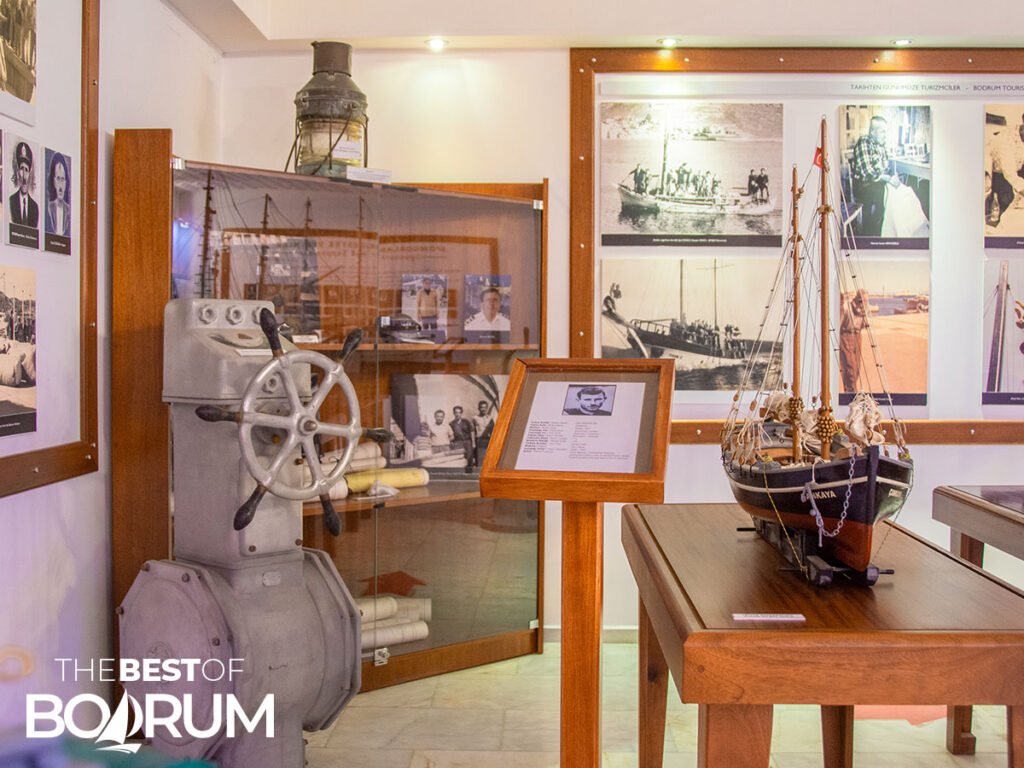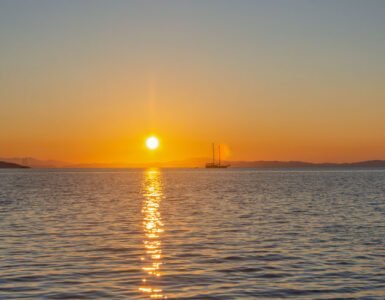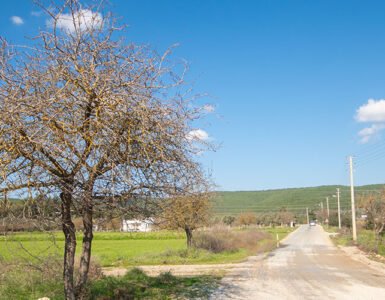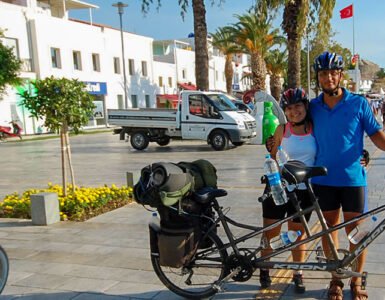Turkiye is a gigantic archaeologic site which witnessed the rise and fall of dozens of civilizations which shaped the future of the humankind. Lydians invented the money, for example. Sumerians, Phrygians, Urartians, Assyrians, Teucrians, Carians, Seljuks and many more lived here and became a part of Anatolian legacy. My personal favourite is Hitites because they have invented the beer!
Among all the powerful civilizations in our legacy, we somehow tend to push the local histories into the background. However, there is a special museum telling us about the recent history of Bodrum, just a few hundred meters away from the Bodrum Castle: Bodrum Maritime Museum.
On this page
Table of Contents
Info Card
Address
Carsi Mh. Nazim Hikmet Sokak, No: 4/1 48400 Bodrum / Mugla
Phone
+90 (252) 316 33 10
E-Mail
info@bodrumdenizmuzesi.org
Website (English)
Bodrum Maritime Museum Official Web Site
Working Hours
Summer (May 1st – October 31st): 10:00 – 17:00, closed on Mondays
Winter (November 1st – April 30th): 09:30 – 17: 30, closed on Mondays
Bodrum was a small fishing town until the tourism arrived. The economy was depended on fishing, sponge diving and fruit growing. Bodrum Maritime Museum is a tribute to Bodrumians who have spent their lives by the sea to make a living.
The museum has three main sections. The large-scale wooden models of the famous fishing boats that was used in Bodrum are in exhibition at the main lobby and some other parts of the museum.

At the second floor, one of the largest seashell collections of the world, Hasan Gulesci collection, can be visited.
Finally, some personal items of Cevat Sakir Kabaagacli, a.k.a. The Fisherman of Halicarnassus can be seen on the ground floor.
The Foundation of Bodrum Maritime Museum
Bodrum is one of the most important seafaring and ship building locations of Turkiye with thousands of boats in its harbours and marinas, tens of internationally recognized shipyards. It is also where world-famous Blue Voyage was born.
Although the recent research showed that the history of seafaring in and around Bodrum goes back to the Bronze Age, it is not clear when boatbuilding has started. Many ancient historians think that it should have started around 3,000 BC during the age of Leleges who are also known as the first habitants of the region. Leleges were highly involved in piracy, so the historians assume that they had to have boatbuilding technology.

Before becoming a popular tourism destination, main sources of income of the Bodrum Peninsula were fishing and sponge diving. Sponge diving is a kind of history now, but you can still meet the former spongers and listen their stories about “sponge hunt” without using any diving equipment.
The relationship between the Aegean Sea and the Bodrumians is still vital. Being a fisherman still is handed down from father to son. It is a family tradition. Some families, on the other hand, had invested in tourism industry and got into yachting and charter business. Don’t be surprised if you see a million-dollar gullet owner still working as the captain in blue voyages.
In a town where the culture has been shaped by the sea, there should have been a museum to reflect the recent maritime history. Bodrum Municipality, Bodrum Chamber of Commerce and Mr.Ali Kemal Denizaslani had worked hard and opened Bodrum Maritime Museum in 2011 by receiving support from Special Provincial Administration of Mugla Governorship, IMEAK Chamber of Shipping Bodrum Branch, Mariners Association, OASIS Shopping Centre and Mr.Hasan Gulesci.

After visiting The Bodrum Museum of Underwater Archaeology, Bodrum Maritime Museum is worth to stop by. Don’t miss it!
Sections of the Bodrum Maritime Museum
Bodrum Maritime Museum has three main sections: Wooden model boat collection of Ali Kemal Denizaslani, seashell collection of Hasan Gulesci and personal belongings of Cevat Sakir Kabaagacli, The Fisherman of Halicarnassus.
Large Scale Model Boats
The largest section of the museum is the lounge where the wooden models of the boats which were used by the fishermen and the sponge divers of Bodrum.
One of the well-known sailors of Bodrum, Mr. Ali Kemal Denizaslani, had also a great hobby of making large scale models of the boats in the harbour. Mr. Denizaslani has died in August 2012, at his late 60s. I have never met him. I wish I had.

He was being called as “Chief” and “Grand Master” by the Bodrumians because he was a highly skilled craftsman. He had started his life as a fisherman following in his father’s path. Then he became a boat maker and started to build wooden boats and gullets for his fellow townsmen. After working at his own small shipyard for years, he decided to sell the shipyard for some reason and put his focus on making scaled wooden models of the boats which were used in Bodrum for transportation, sponge diving and fishing purposes.
With the Bodrum Maritime Museum project, he had donated these models as a contribution for keeping the Bodrum’s recent maritime history alive.
I was impressed with not only for the great details on the models but also with the information provided next to them. Each model has a short description next to it telling who the owner was, when it was active, where was it built and the picture of its owner.
Is not it wonderful? Models of real boats which were used in fishing, sponge diving and transportation when Bodrum was a small Aegean village with tribute to the real owners. I like it!
Most of their families are still living in Bodrum and there are sons, daughters, wives, or grandchildren.
Hasan Gulesci Seashell Collection
Another section of the museum comes from another special person, Mr.Hasan Gulesci. He is a former CEO of one of the biggest corporations of Turkiye and has been collecting seashells from all over the world for over 50 years. His amazing and rare collection is in the Bodrum Maritime Museum now.

After spending almost all his life for gathering different and unique seashells from everywhere he visited, this gentleman decided to donate his years of hard work, one of the most comprehensive and valuable seashell collections of the world to a museum.
The seashells in the museum are not the whole collection though. I was told that there are still thousands of species which are still being scientifically classified and catalogued by a team of volunteers. Unfortunately, it appears that the whole collection will need a much bigger space to be exhibited. Still, thousands of amazing creations of the nature is there, waiting for you.
The Fisherman of Halicarnassus
Have you heard about The Fisherman of Halicarnassus before? His real name was Cevat Sakir Kabaagacli who was exiled to Bodrum in 1925 for 3 years because of an article he wrote in a newspaper. Yes, being in Bodrum was a punishment in the beginning of 20th century!
After arriving Bodrum, he was moved by the people, the nature, and the culture of the area. He started to write novels and stories about the real-life stories of the locals and stayed in Bodrum for 25 years. Cevat Sakir was the one who anticipated that Bodrum could be a popular, worldwide destination with its natural beauty and the culture. He worked hard for it and succeeded.
A small corner in Bodrum Maritime Museum is dedicated to The Fisherman of Halicarnassus.
Although it is fascinating to see some of the personal belongings of such a great and important personality, I strongly believe that he deserves his own dedicated museum.

He was a famous writer and an important historian whose books are still in the curriculum of our education system. His ideas and plans about making Bodrum a tourism centre have worked. He came up with another idea which he called “Blue Voyage” and it has worked as well. In Bodrum streets, you will see giant eucalyptus trees planted by the fisherman himself. Last but not the least, he won the hearts of all Bodrumians, becoming the most respected name for the locals.
He lived in a house on the coastline in today’s Bars Street. However, his house is a fast-food restaurant today while his belongings are on display on a corner of a museum. This is not fair.
Still, I am thankful to Bodrum Maritime Museum for reserving a display area for Cevat Sakir Kabaagacli, The Fisherman, my personal hero.
Information and Photos
Lots of detailed and quality information about both ancient and recent marine history are hanged on the walls in both Turkish and English. I also use this information extensively for The Best of Bodrum.
Life under the Mediterranean Sea is in danger of extinction from Iberia coasts to Southern Turkiye. The rumour has it that sponges which were the life source of Bodrum until a couple of decades ago, have already gone forever. Even Bodrumians believe so. However, lucky for us, this is not the case.

The sponges are not extinct yet, but they are in great danger. To change this misconception and to raise awareness for the extinction thread, the museum displays some sponge species living around Bodrum. Comprehensive information about sponges and sponge diving are also presented.
A small gift shop in the museum sells some books and souvenirs for you, your family, and your friends. If the price looks acceptable to you, shopping here will help to keep the museum doors open. This is a private museum. Although this is one of the private museums which are supported by the Ministry of Culture and Tourism, inadequate funding requires our support. Unfortunately, all private museums have the same issue.
In conclusion, if you are interested in local history and culture of Bodrum, it is worthwhile to visit Bodrum Maritime Museum. I know some of the people who put great effort in keeping this museum alive. They are all volunteers, not professionals. I am sure they will be happy to hear from you.







Add comment